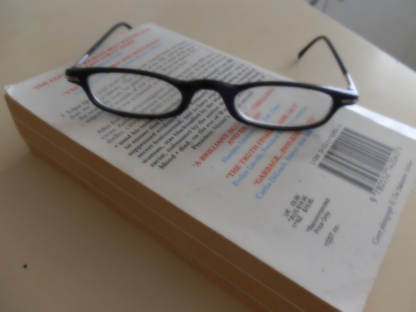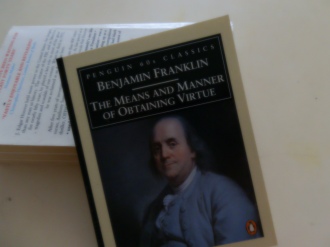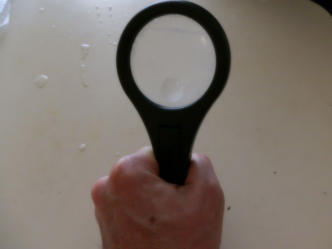
Portfolio 4, Q. 1
Fogg (2003a, pp. 148, 149) highlights how the Internet can be a very credible source of information, but on the other hand, it can also entice with erroneous information. Lewandowski (2013, p. 132) suggests that credibility incorporates expertise and trustworthiness. Moreover, credibility relies on perception (Flanagan & Mezger, 2008, p. 8). If the reader’s trust is broken then concepts like reputation, authority and reliability are severed (Stuart & Hooper, 2009, p. 235; Flanagan & Mezger, 2008, p. 8). Moreover, Chete and Mbegbu (2012, p. 210) reiterate the negative effects of misinformation from the Internet. Perceptions of low quality control impact negatively on tertiary students (Chete & Mbegbu, 2012, p. 210). But on the other hand, credible sources create trust and consolidate the authority and expertise of the writer. As a student, I will return to those trusted sites that have built their credibility, because my perception of the information has been affirmed.
Shellenbarger (2016, November 21) highlights a Stanford study that found students appear to have trouble evaluating the trustworthiness and accuracy of internet news. Donald (2016, November 22), citing the same Stanford study as Shellenbarger (2016, November 21), highlights how students in the study were more likely to become consumed by the content rather than judge the source. The Stanford study reiterates the need as a student to assess the credibility, both in its trustworthiness and expertise.

Portfolio 4, Q. 2
Lih (2012, p. 331) suggests that Wikipedia is becoming recognized as a credible source, citing several media outlets who have quoted from Wikipedia sources. However, a citation in a newspaper is not evidence of credibility. An online newspaper may seduce their readers with a perception of believability, but it does not always offer evidence of believability and accuracy (Abdulla et al., 2005, p. 150).
Lewandowski (2013, p. 132) recognizes that expertise is part of credibility. Anderson (2012, p. 146) reiterates that unreliability and authority are to blame for Wikipedia’s reputation for lack of credibility. Chesney (2006) notes that Wikipedia has warned that articles have the potential to fall prey to vandalism and to a writer’s agenda. Weinberger (2007, ch. 7) notes that Wikipedia’s credibility relies on an author’s contribution, but not their credentials.
Schneiderman (2015, p. 36) notes that Wikipedia places a lot of protections, guarding against erroneous news and eliminating threats. He suggests that such protection provide trust and credibility (Schneiderman, 2015, p. 40). However, Harvard University (“Harvard Guide”, 2017) argues that Wikipedia contributors are not filtered. Thus, the protections against writers with no expertise and no authority are weak.
Trustworthiness is one of the keys toward credibility (Fogg, 2003a, p. 124). Fitzgerald (2009, p. 181) highlights the inaccuracies that have sometimes plagued Wikipedia. He suggests that the posts can be unbalanced, sometimes lacking trustworthiness and tainted with bias (Fitzgerald, 2009, p. 181).

Portfolio 4, Q. 3
Fogg (2003b, p. 722) highlights how a consumer’s perception about the online service will determine whether their future use of the website. But what are some of the issues that will affect the future perceived credibility of a website? Fogg (2003a, p. 154) hints at some of the future issues:
· Bias perceived in the content
· Typographical errors
· Pop-up advertisements
· Length of time for download
· Confusion in name or website address creates confusion
· Content not updated regularly
· Online security
· Professionalism of design
· Customer service issues such as user feedback services and time of reply
· Subscriptions
· Links to other websites
· Referencing untrustworthy sites
Lim (2014, p. 68) highlights how perceptions of credibility are important in shaping user attitude. These future issues are key toward shaping attitudes toward websites, especially customer service and design professionalism. Moreover, Lim (2014, p. 68) suggests that user confidence is formed through credibility. Issues such as security and bias will consolidate confidence.

The five-star rating on this Weet-Bix box gives credibility
Portfolio 4, Activity
Fogg (2003, p. 163) identifies four types of Website credibility, including presumed credibility, reputed credibility, surface credibility and earned credibility.
Presumed credibility is based on assumptions according to the reader’s perception. These assumptions steer the reader’s evaluation of the site. A non-profit organization’s website is one example. It often ends with .org (Fogg, 2003, p. 164). One example of presumed credibility is http://www.greenpeace.org. Greenpeace steers the perceptions and assumptions of their readers with their website.
Reputed credibility rests on the endorsements of a third person (Fogg, 2003, p. 164). The site stands on the credibility of awards they have won and seals of approval. They are often linked to credible sites or companies. One example of reputed credibility is https://www.allianz.com.au/about-us/awards. Allianz showcase their awards. They rest on their endorsements.
Surface credibility is based on first impressions. The website looks professional and constantly updated. An example of a website with surface credibility is http://www.afl.com.au/. The AFL constantly updates their website with the latest scores and up-to-date news stories.
Earned credibility ties the previous three together, providing fast customer service and recognizes your online presence. An example of earned credibility is https://www.amazon.com/. The site remembers the books you have looked at and provides comprehensive customer service options.
REFERENCE
Abdulla, Rasha A; Garrison, Bruce; Salwen, Michael B.; Driscoll, Paul D. & Casey, Denise (2005). “Online News and the Public.” pp. 147-164. Taken from Salwen, Michael B.; Garrison, Bruce & Driscoll, Paul D. (Eds.), Online News and the Public. New Jersey & London: Lawrence Erlbaum Associates.
Anderson, Paul (2012). Web 2.0 and Beyond: Principles and Technologies. Florida: CRC Press.
Brooke, Donald (2016, November 22). “Stanford Researchers Find Students Have Trouble Judging the Credibility of Information Online.” Stanford Graduate School of Education. Retrieved from https://ed.stanford.edu/news/stanford-researchers-find-students-have-trouble-judging-credibility-information-online
Chesney, Thomas (2006, November 6). “An Empirical Examination of Wikipedia’s Credibility.” First Monday. 11 (11). Retrieved from http://firstmonday.org/article/view/1413/1331
Chete, F. O. & Mbegbu, J. I. (2012). “Website Credibility: Perceptions of Stakeholders.” Pacific Journal of Science and Technology. 13(2): 208-211. Retrieved from http://www.akamaiuniversity.us/PJST13_2_208.pdf
Fitzgerald, M.A. (2009). “Wikipedia: Adventures in the New Info-Paradigm.” pp. 177-188. Taken from Orey, Michael; McClendon, Robert & Branch, Robert Maribe, Educational Media and Technology Yearbook. Volume 34. New York: Springer.
Flanagan, Andrew J. & Metzger, Miriam J. (2008). “Digital Media and Youth: Unparalleled Opportunity and Unprecedented Responsibility.” pp. 5-27. Taken from Flanagan, Andrew J. & Metzger, Miriam J. (Eds.), Digital Media, Youth and Credibility. Massachusetts & London: MIT Press
Fogg, B. J. (2003a). Credibility and the World Wide Web in Persuasive Technology: Using Computers to Change What We Think and Do. Amsterdam: Morgan Kaufmann.
Fogg, B. J. (2003b). “Prominence-Interpretation Theory: Explaining How People Assess Credibility Online.” CHI 2003. New Horizons.
Franklin, Benjamin (1995). The Means and Manner of Obtaining Virtue. UK: Penguin Books.
“Harvard Guide to Using Sources.” [2017]. Retrieved from the Harvard University Website: http://isites.harvard.edu/icb/icb.do?keyword=k70847&pageid=icb.page346376
Lewandowski, Dirk (2013). “Credibility in Web Search Engines.” pp. 131-147. Taken from Folk, Moe & Apostel, Shawn (Eds.), Online Credibility and Digital Ethos: Evaluation Computer-Mediated Communication. USA: Information Science Reference.
Lih, Andrew (2012). “Build an Encyclopedia: Everybody is Invited.” pp. 329-332. Taken from Chanda, Nayan & Froetschel, Susan (2012). A World Connected: Globalization in the 21st Century. New Haven, Connecticut: Yale Global Online.
Lim, Young-Shin (2014). “Evaluating the Wisdom of Strangers: The Perceived Credibility of Online Consumer Reviews on Yelp.” pp. 67-82. Journal of Computer-Mediated Communication. 20 (1). Retrieved from http://onlinelibrary.wiley.com/doi/10.1111/jcc4.12093/pdf
Schneiderman, Ben (2015). “Building Trusted Social Media Communities: A Research Roadmap for Promoting Credible Content.” pp. 35-43. Taken from Matei, Sorin Adam & Bertino, Elisa (Eds.), Roles, Trust, and Reputation in Social Media Knowledge Markets. Switzerland: Springer International Publishing.
Shellenbarger, Sue (2016, November 21). “Most Students Don’t Know When News is Fake, Stanford Study Finds.” The Wall Street Journal. Retrieved from https://www.wsj.com/articles/most-students-dont-know-when-news-is-fake-stanford-study-finds-1479752576
Stuart, Janita & Hooper, Val (2009). “Sociological Factors Influencing Internet Voting.” pp. 231-249. Taken from Reddick, Christopher G. (Ed.), Handbook of Research on Strategies for Local E-Government Adoption and Implementation: Comparative Studies. New York: Information Science Reference.
Weinberger, David (2007). Everything is Miscellaneous: The Power of the New Digital Disorder. New York: Henry Holt and Company.